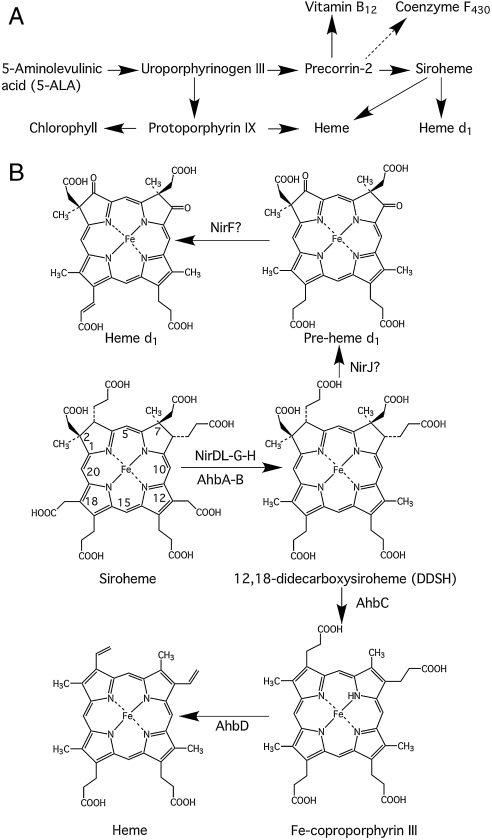Fig. 3.
Deduced pathway from siroheme to d1 and heme. (A) The corrected modified tetrapyrrole pathway is shown with siroheme now acting as an intermediate for heme and d1 heme synthesis. This pathway can be compared to Fig. 1C. (B) The branched pathway from siroheme to d1 and heme is shown together with the enzymes that are thought to be involved with each particular step. Didecarboxysiroheme is generated from siroheme by the sequential decarboxylation of the side chains attached to C12 and C18. For d1 synthesis, didecarboxysiroheme is modified by replacement of the propionate side chains at C3 and C8 with oxo groups in a reaction likely catalyzed by NirJ to generate a pre-d1 intermediate, which is converted into d1 by the introduction of a double bond on the propionate side chain on C17. For heme synthesis, didecarboxysiroheme is modified by the action of AhbC to remove the acetic acid side chains attached to C2 and C7 to give Fe-coproporphyrin. This intermediate is converted into heme by AhbD through the oxidative decarboxylation of propionate side chains on C3 and C8.

